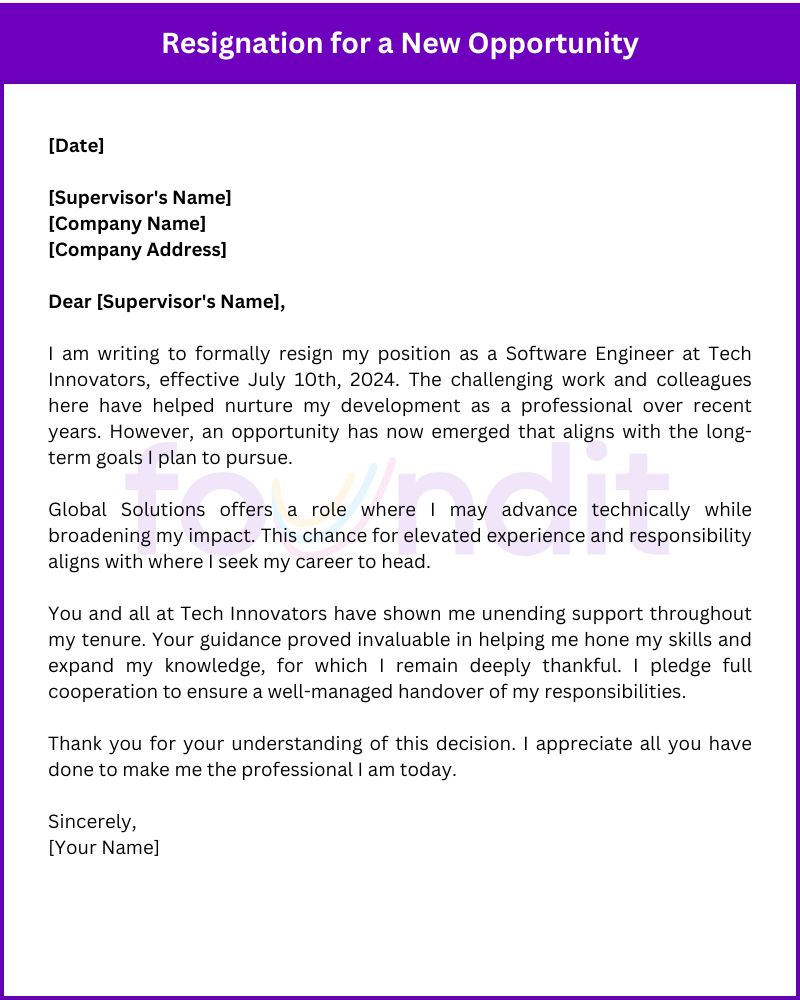Think about the iconic Rachel Green from everyone’s favourite sitcom, F.R.I.E.N.D.S. Her first job on the show was as a waitress at Central Perk. Eventually, she could pursue her dream career in the fashion industry. Like our favourite fictional characters, we also move from one job to another to explore better opportunities. One important part of this transition is writing a resignation letter.
But we know that it’s not something easy. How do you politely inform your supervisor or HR that your journey with them ends here?
Don’t worry because we are here to break down this process. Start reading this article quickly to get all the details regarding crafting a resignation letter.
1. Elements of a Well-Written Resignation Letter
A resignation letter communicates your decision to leave with care, clarity and courtesy. Done well, it can help ensure smooth transitions and preserve positive relationships. Consider these key components:
1.1. Header with your contact information and date
Begin by stating your contact details clearly at the top. Directly underneath, note the date you drafted the letter. This provides a timeframe and direct point of reference.
1.2. Addressee’s information (supervisor or HR representative)
Specify to whom you address the letter – likely a supervisor or HR contact. Include their full name, role, and organisation details so it reaches the intended audience. Proper addressing in a simple resignation letter indicates respect.
1.3. Clear statement of resignation
Get straight to the point in the opening paragraph. A simple declaration such as “Please accept this formal notice of my resignation from my position as [role] at [company], effective [date]” sets a clear tone.
1.4. Effective date of your resignation
Mention when you plan to conclude your duties to allow preparation. For example, “My final day will be two weeks from now on [specific date].” This timely information eases transitions.
1.5. Reason for leaving (optional)
Briefly explain the reason, if desired, to offer understanding while avoiding defensiveness. For instance, “I have decided to explore opportunities that align more closely with my long term goals.”
1.6. Expression of gratitude
Convey thanks for any support received and lessons learned during tenure. Words of recognition foster respect and goodwill.
1.7. Offer to assist with the transition
Reiterate willingness to help through the change in responsibilities.
1.8. Closing and signature
Close formally with a signing-off phrase such as “Sincerely” or “Thank you for your time,” plus your name.
2. Tips for Crafting an Effective Resignation Letter
Writing a simple but proper resignation letter requires careful consideration and a professional approach. Here are some tips on how to write a resignation letter that respects both you and your organisation:
- A resignation letter must only communicate your intention to depart and any mandated information briefly yet respectfully. Avoid lengthy descriptions or criticisms that dilute your message.
- Even in challenging circumstances, maintain a dignified tone that preserves your relationships and reputation. Focus on closing this chapter constructively rather than reopening past hurts.
- Customarily, two weeks’ notice is appropriate, but ensure you know your company’s formal requirements for a smooth transition.
- If including reasons, do so honestly yet judiciously. Highlight new growth opportunities rather than old grievances. Focus on transferring knowledge helpfully.
- Communicate how this move furthers your career aims and self-development. Demonstrate that this decision propels rather than flees your journey.
- Review for errors, ambiguities or unnecessary details. A letter that shines with clarity and professionalism fittingly concludes this role.
- Meet personally where possible to discuss amicably. A respectful meeting maintains the relationship you built.
3. Free Resignation Letter Template
Check out this resignation letter template and modify it according to your requirements.
| [Date] [Supervisor’s Name] [Company Name] [Company Address] Dear [Supervisor’s Name], This letter formally announces my resignation from my role as [Your Position] at [Company Name]. My last working day will be [Last Working Day]. I have sincerely enjoyed working at [Company Name], and I am thankful for the opportunities I have had to grow as a person and a professional. However, I have accepted a new position. I am eager to take on this new challenge, and I believe it will help me meet my personal and professional goals. I will do my best to ensure this transition is smooth. Please let me know if there is anything specific I can do to help transfer my responsibilities. Thank you for your understanding and cooperation. Sincerely, [Your Name] |
4. Sample Resignation Letter 1: Resignation for a New Opportunity
Let’s check out a formal resignation letter showing you are leaving because you have found a better offer.

5. Sample Resignation Letter 2: Resignation for Personal Reasons
At times, you might have to leave a company because of family problems or other issues. Let’s check out a simple resignation letter sample stating that.

6. Sample Resignation Letter 3: Resignation for Relocation
Moving to a new location can be a major reason behind a company. Let’s check out a resignation letter sample describing that.

7. Handling the Resignation Process
Resigning from a job is never a simple task, as it involves more than just submitting a notice of resignation. Successfully navigating the resignation process demands maintaining the utmost professionalism and facilitating a seamless transition.
7.1. Preparing for your resignation meeting with your supervisor
Before submitting your resignation, strategize for an important discussion with management. Consider your reasons for leaving and how you can support a smooth handover. Entering the meeting well-prepared allows you to convey your message respectfully and clearly.
7.2. Anticipating potential questions or reactions
Anticipate questions or reactions your supervisor may have in response to the news. They could inquire about motives for resigning, future aims, or the management of the transition period. Pondering on these in advance equips you with thoughtful, candid, yet tactful responses.
7.3. Maintaining professionalism and confidentiality
Throughout the exit process, uphold professionalism and confidentiality. Refrain from discussing your resignation with coworkers until first informing your supervisor directly. This ensures you give out information in a controlled, considerate manner.
7.4. Completing necessary exit procedures and documentation
Adhere to company departure procedures and fill out all requisite paperwork thoroughly. This may involve an exit interview, returning supplies, and guaranteeing that the transfer of responsibilities is handled smoothly. Attentively concluding these tasks underscores your professional character.
8. Post-Resignation Considerations
Once you have submitted your resignation letter, several factors must be considered. These factors ensure a smooth transition and maintain positive professional relationships.
8.1. Ensuring a smooth transition of your responsibilities
Work closely with your supervisor and coworkers to guarantee a seamless transfer of responsibilities. Develop comprehensive notes, offer training for your substitute, and remain available to answer any queries that surface after your departure. This exemplifies your dedication to the team’s achievements even after leaving.
8.2. Maintaining positive relationships with former colleagues and supervisors
Keep in contact with former coworkers and supervisors. These relationships can be useful for networking, recommendations, and future job prospects. Send a thank you email or connect on social platforms to stay linked professionally.
8.3. Honouring non-disclosure and non-compete agreements
Review any confidentiality or noncompete agreements signed upon joining the company. Ensure you comprehend your obligations and continue honouring these arrangements after leaving. This helps prevent any legal issues and maintains your professional integrity.
8.4. Updating your professional networks and job search materials
Revise your resume and other professional resources to reflect your new status. Highlight your accomplishments and new skills gained from your previous role. Keeping your professional presence current helps your job search and prepares you for new opportunities.
9. Conclusion
Ending one’s tenure at a company is no simple matter. Remember to write a professional resignation letter following the above mentioned tips and samples.
FAQs on Resignation Letter Template and Format
Q1: How long should I give notice when resigning?
A1: In general, two weeks is standard. But check your employment contract or company policy as there might be some special requirements.
Q2: Should I include the reason for my resignation in the letter?
A2: It is optional. If you decide to include it, keep it brief and positive.
Q3: Can I send my resignation letter by email?
A3: Sending a letter in person will appear more personal. However, emailing the letter when circumstances do not permit doing it in person is appropriate.
Q4: What should I do if my employer’s response to the letter is negative?
A4: Remain professional and calm and insist on the point that you are leaving. Furthermore, your letter should state your reasons for resigning and your willingness to work on achieving a smooth transition.
Q5: Should I consider the counteroffer if my current employer comes up with it?
A5: Undoubtedly, it is recommended that you consider the counteroffer if your company presents it. However, do not rush into taking it. Weigh its pros and cons, and think about whether it will meet your long-term career goals.




